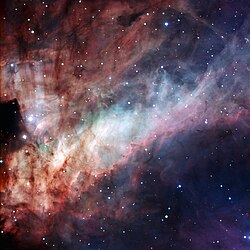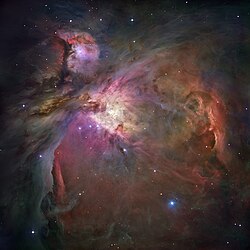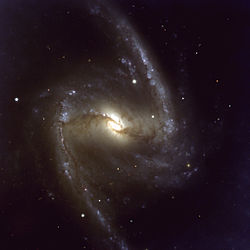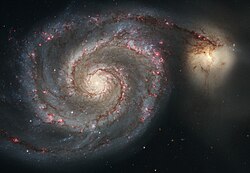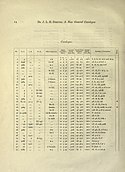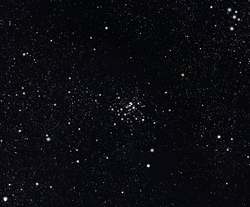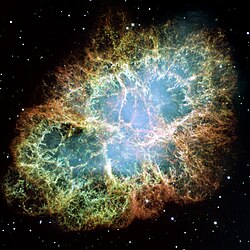New VISTA snap of star cluster 47 Tucanae
Globular clusters are vast, spherical clouds of old stars bound together by gravity. They are found circling the cores of galaxies, as satellites orbit the Earth. These star clumps contain very little dust and gas — it is thought that most of it has been either blown from the cluster by winds and explosions from the stars within, or stripped away by interstellar gas interacting with the cluster. Any remaining material coalesced to form stars billions of years ago.
These globular clusters spark a considerable amount of interest for astronomers — 47 Tucanae, otherwise known as NGC 104, is a huge, ancient globular cluster about 15 000 light-years away from us, and is known to contain many bizarre and interesting stars and systems.
Located in the southern constellation of Tucana (The Toucan), 47 Tucanae orbits our Milky Way. At about 120 light-years across it is so large that, despite its distance, it looks about as big as the full Moon. Hosting millions of stars, it is one of the brightest and most massive globular clusters known and is visible to the naked eye [1]. In amongst the swirling mass of stars at its heart lie many intriguing systems, including X-ray sources, variable stars, vampire stars, unexpectedly bright “normal” stars known as blue stragglers (eso1243), and tiny objects known as millisecond pulsars, small dead stars that rotate astonishingly quickly [2].
Red giants, stars that have exhausted the fuel in their cores and swollen in size, are scattered across this VISTA image and are easy to pick out, glowing a deep amber against the bright white-yellow background stars. The densely packed core is contrasted against the more sparse outer regions of the cluster, and in the background huge numbers of stars in the Small Magellanic Cloud are visible.
This image was taken using ESO’s VISTA (Visible and Infrared Survey Telescope for Astronomy) as part of the VMC survey of the region of the Magellanic Clouds, two of the closest known galaxies to us. 47 Tucanae, although much closer than the Clouds, by chance lies in the the foreground of the Small Magellanic Cloud (eso1008), and was snapped during the survey.
VISTA is the world’s largest telescope dedicated to mapping the sky. Located at ESO’s Paranal Observatory in Chile, this infrared telescope, with its large mirror, wide field of view and sensitive detectors, is revealing a new view of the southern sky. Using a combination of sharp infrared images — such as the VISTA image above — and visible-light observations allows astronomers to probe the contents and history of objects like 47 Tucanae in great detail. Notes
[1] There are over 150 globular clusters orbiting our galaxy. 47 Tucanae is the second most massive after Omega Centauri.
[2] Millisecond pulsars are incredibly quickly rotating versions of regular pulsars, highly magnetised, rotating stellar remnants that emit bursts of radiation as they spin. There are 23 known millisecond pulsars in 47 Tucanae — more than in all other globular clusters bar one, Terzan 5.Relevante Bilder
Relevante Artikel
47 Tucanae47 Tucanae ist nach Omega Centauri der zweithellste Kugelsternhaufen des Himmels und schon mit bloßem Auge als kleines Nebelfleckchen erkennbar. Er ist ein besonders großer, alter Haufen und etwa 15.000 Lichtjahre von der Erde entfernt. .. weiterlesen
New General CatalogueDer New General Catalogue of Nebulae and Clusters of Stars (NGC) ist ein Ende des 19. Jahrhunderts entstandener Katalog von galaktischen Nebeln, Sternhaufen und Galaxien, der noch heute als Standardwerk gilt. Er wurde in den 1880er-Jahren zusammengestellt und 1888 von Johan Ludvig Emil Dreyer veröffentlicht; eine wichtige Grundlage waren die systematischen Himmelsdurchmusterungen und speziellen Beobachtungen von Wilhelm Herschel. 1895 und 1908 wurde der NGC um die beiden Index-Kataloge IC I und IC II erweitert. Der NGC enthält 7840 Einträge, darunter auch die meisten des Messier-Katalogs. Im Unterschied zu diesem sind die Objekte des NGC-Katalogs nach Rektaszension geordnet. Er enthält Objekte des Nord- und des Südhimmels. Der Katalog enthält jedoch einzelne Fehler – z. B. sind einige Objekte mehrmals unter verschiedenen Katalognummern enthalten oder wurden nochmals in einen der Index-Kataloge aufgenommen. Der Versuch, diese Fehler zu beseitigen, wurde 1993 durch das NGC/IC-Projekt initiiert, nach teilweisen Versuchen mit dem Revised New General Catalogue (RNGC) von Jack W. Sulentic und William G. Tifft im Jahr 1973 und NGC2000.0 von Roger W. Sinnott im Jahr 1988. Eine vollständige Überarbeitung des NGC und der zugehörigen Indexkataloge wurde von Wolfgang Steinicke 2009 erstellt. .. weiterlesen

